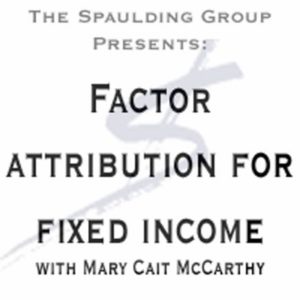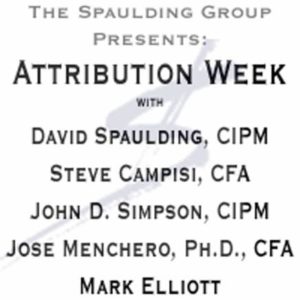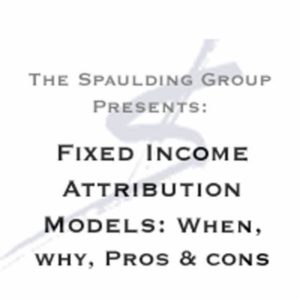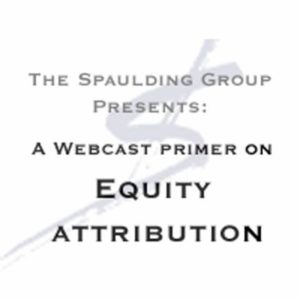Performance Measurement Attribution
Virtual Training Modules
Virtual learning classes, approximately 4 hours each
All 4 Modules - $1,295
Module 1 : Attribution Fundamentals and Equity Attribution
Instructor: David D. Spaulding, DPS, CIPM
January 11, 2021
10:00 AM - 12:00 Noon EDT
1:00 PM - 3:00 PM EDT
- What is attribution and why it’s important
- We will contrast absolute (“contribution”) and relative attribution.
- An in-depth look at the two “Brinson” models (Brinson, Hood, Beebower and Brinson, Fachler, along with a variation, so students can understand the key differences between them.
- Exercises will be included to help the students better understand the formulas that are employed.
Module 2: Equity Attribution, Day 2 and Fixed Income Attribution
Instructor: John D. Simpson, CIPM
January 12, 2021
10:00 AM - 12:00 Noon EDT
1:00 PM - 3:00 PM EDT
- We will explain the difference between arithmetic and geometric excess returns, in basis points and money.
- We will also discuss the pros and cons of arithmetic vs. geometric excess returns.
- A conversion of the arithmetic Brinson-Fachler model to a geometric form will be covered, with comparison of results.
- We will contrast holdings-based and transaction-based attribution, including operational considerations.
- An in-depth look at why fixed income attribution models need to be different from equity attribution models will be covered, and we will distill the differences between stocks and bonds into five critical concepts that shape the attribution approaches used.
- A framework for classifying fixed income attribution models into three broad categories will be covered.
- Three fixed income attribution models will be covered: Campisi, van Breukelen and McLaren.
- Detailed exercises and examples will be used to reinforce the concepts and math of all models covered.
Module 3: Multi-level Attribution
Instructor: John D. Simpson, CIPM
January 13, 2021
10:00 AM - 12:00 Noon EDT
1:00 PM - 3:00 PM EDT
- We will discuss the subject of performing multi-level attribution (i.e., at more than two levels), including both Nested Attribution and Balanced Attribution.
- The Campisi model for Balanced Attribution will be covered.
- Another application of multi-level attribution is Multicurrency Attribution: we will discuss how to bifurcate local market decisions vs. currency decisions.
- Models for both naïve currency attribution will be covered, as well as two "flavors" of the Karnosky-Singer currency attribution model.
- We will discuss the use of other attributes in models besides the traditional characteristics of sector and currency.
- Exercises will be used to illustrate the concepts and the mathematics of the models.
Module 4: Multi-period Attribution, PLUS
Instructor: David D. Spaulding, DPS, CIPM
January 14, 2021
10:00 AM - 12:00 Noon EDT
1:00 PM - 3:00 PM EDT
- We will review several popular methods to link attribution effects over time, resulting in multi-period attribution. We will explain why the “simple” approaches typically do not work as expected. Students will gain a good understanding of the Cariño, Menchero, Frongello, and GRAP methods. In addition, students will discover a way to link absolute (contribution) effects across time.
- Asset owners need attribution, too; we’ll touch on a couple approaches
- Because hedge fund managers are absolute managers, relative performance does not apply. That said, they can still benefit from attribution, and we'll explain how.
- Now that you have the results, what do you do with them? We address this.
- We will touch on the challenges of software searches when it comes to attribution systems, and wrap up with a view on what lies ahead, including a discussion on risk-adjusted attribution.
- Exercises will be included to help the students gain a greater understanding of the models.





